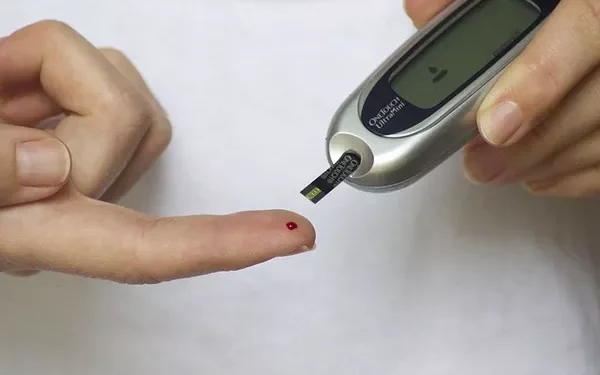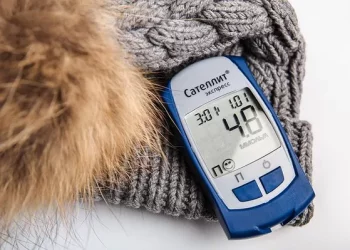For millions of people worldwide living with diabetes, managing blood glucose levels is a daily priority that requires constant vigilance. Over the past few decades, advancements in technology have significantly changed how patients monitor their blood sugar. One of the most remarkable developments is the introduction and widespread use of Continuous Glucose Monitoring (CGM) systems. These devices offer real-time insights into glucose trends, allowing individuals and healthcare providers to make informed decisions about treatment and lifestyle changes.
In this detailed article, we will explore what continuous glucose monitoring systems are, how they work, their benefits and limitations, different types available in the market, and how they are reshaping diabetes management.
What Is a Continuous Glucose Monitoring System?
A Continuous Glucose Monitoring (CGM) system is a medical device that tracks glucose levels in real-time throughout the day and night. Unlike traditional blood glucose meters that provide a snapshot of blood sugar at a single point in time, CGMs offer a dynamic, continuous view. This continuous stream of information helps patients understand how their glucose levels fluctuate in response to food, exercise, medications, stress, and sleep.
CGMs do not measure blood glucose directly from blood samples; instead, they use a small sensor inserted just under the skin, usually on the abdomen or the back of the upper arm. This sensor measures the glucose concentration in the interstitial fluid — the fluid between the cells. Since interstitial glucose correlates closely with blood glucose, CGM data is considered highly reliable for managing diabetes.
Key Components of a CGM System
A typical continuous glucose monitoring system comprises several main components, each playing a crucial role:
1. Sensor
The sensor is a tiny, flexible filament inserted under the skin. It continuously measures glucose levels in the interstitial fluid and sends this data to the transmitter.
2. Transmitter
Attached to the sensor, the transmitter sends glucose readings wirelessly to a receiver or a compatible smart device. Some transmitters are disposable, while others are reusable and need to be recharged periodically.
3. Receiver or Smart Device
The receiver displays real-time glucose data. It can be a dedicated handheld device or a smartphone app connected via Bluetooth. Users can view current glucose levels, track trends, and set up alerts for high or low blood glucose.
Some newer systems integrate CGM data with insulin pumps, creating a hybrid closed-loop system — often referred to as an “artificial pancreas” — which automatically adjusts insulin delivery based on glucose readings.
How Does a Continuous Glucose Monitoring System Work?
The CGM sensor uses an enzymatic reaction to detect glucose levels. Typically, the sensor contains an enzyme called glucose oxidase, which reacts with glucose molecules in the interstitial fluid to produce an electrical signal. This signal is proportional to the glucose concentration.
The transmitter processes this signal and sends the data wirelessly to a receiver or smart device. The data is updated at regular intervals, often every 1 to 5 minutes, providing a near-real-time glucose profile.
It’s important to note that CGMs measure glucose in interstitial fluid, not blood. Because of this, there can be a slight delay — typically around 5 to 15 minutes — between blood glucose and interstitial glucose changes. Nevertheless, CGMs provide highly valuable trend information and help prevent dangerous glucose excursions.
Advantages of Continuous Glucose Monitoring Systems
Continuous glucose monitors have transformed diabetes management for many individuals. Here are some of the most significant benefits:
1. Real-Time Monitoring
With continuous updates, CGMs allow individuals to see their glucose levels at any given moment. This immediate feedback helps users understand the impact of meals, physical activity, stress, and medication on their blood sugar.
2. Trend Analysis
CGMs not only show current glucose levels but also reveal whether those levels are rising, falling, or stable. Trend arrows help users anticipate and act on blood sugar changes before they become problematic.
3. Reduced Hypoglycemia Risk
Hypoglycemia (dangerously low blood sugar) can be life-threatening, especially during sleep. Many CGMs come with customizable alerts that warn users when glucose levels are trending too low or too high. These alerts can help prevent severe episodes of hypoglycemia.
4. Data-Driven Decision Making
By reviewing CGM data, individuals and healthcare providers can identify patterns and make informed adjustments to insulin therapy, diet, and exercise regimens. Some devices offer comprehensive reports, such as “time in range” (TIR), which show the percentage of time glucose levels stay within the target range.
5. Enhanced Quality of Life
CGMs can reduce the number of fingerstick blood glucose checks required, although some systems still recommend occasional calibration. Many users report feeling greater freedom and less anxiety about their glucose management.
6. Early Detection of Blood Sugar Fluctuations
CGMs can detect rapid changes in glucose levels before they become symptomatic, allowing for early intervention and more proactive management.
Limitations and Challenges of CGM Systems
While CGMs offer many benefits, they are not without challenges:
1. Cost
Continuous glucose monitoring systems can be expensive, especially without insurance coverage. Sensors, transmitters, and receivers require regular replacement, leading to ongoing costs.
2. Calibration Requirements
Some CGMs require calibration with fingerstick blood glucose tests to maintain accuracy. Newer systems are factory-calibrated and do not require manual calibration, but some users may still prefer occasional checks for peace of mind.
3. Lag Time
As previously mentioned, interstitial glucose measurements lag slightly behind blood glucose changes. During rapid glucose shifts — such as after a meal or exercise — this delay can be noticeable.
4. Skin Irritation
Some users may experience skin irritation, allergic reactions, or infections at the sensor insertion site. Proper hygiene and site rotation are critical to minimize these risks.
5. Learning Curve
Using a CGM effectively requires education. Users need to understand how to interpret data, respond to alarms, and integrate the information into daily management decisions.
Types of Continuous Glucose Monitoring Systems
There are two main types of CGMs currently available:
1. Real-Time CGMs (rtCGM)
Real-time CGMs continuously measure and transmit glucose data without user initiation. They provide constant data flow and often include predictive alerts to warn users before glucose levels reach critical thresholds. Examples include the Dexcom G7 and Medtronic Guardian systems.
2. Intermittently Scanned CGMs (isCGM)
Also known as “flash” glucose monitors, these devices measure glucose continuously but only display the data when the user scans the sensor with a reader or smartphone. They typically do not have real-time alerts. The most well-known example is the Abbott FreeStyle Libre series.
Popular CGM Brands and Models
Several companies manufacture CGM systems, each with its features and advantages:
Dexcom G7: Known for its high accuracy, small sensor size, and no-calibration requirement. The G7 offers customizable alerts and can integrate with several insulin pumps and smart devices.
Abbott FreeStyle Libre 2 and 3: These systems are user-friendly, affordable, and have optional alarms. The Libre 3 provides real-time glucose data and is one of the smallest CGM sensors on the market.
Medtronic Guardian Connect: Works as part of an integrated system with Medtronic insulin pumps. It offers predictive alerts and auto-adjustment of insulin delivery.
Eversense CGM: Unique for being an implantable CGM sensor that lasts up to 180 days. It includes a removable smart transmitter worn over the sensor.
Each system has its pros and cons, and the choice often depends on individual needs, lifestyle, and financial considerations.
Integration with Insulin Pumps and Closed-Loop Systems
One of the most exciting advancements in diabetes care is the integration of CGMs with insulin pumps to create closed-loop or semi-closed-loop systems — often referred to as “artificial pancreas” technology.
In these systems, CGM data is sent directly to an insulin pump, which automatically adjusts insulin delivery based on glucose readings. Some systems are fully automated, while others require minimal user input. Examples include:
Tandem Control-IQ Technology: Integrates the Dexcom G6 CGM with the t:slim X2 insulin pump for automatic insulin adjustments.
Medtronic MiniMed 780G: Combines the Guardian CGM with an insulin pump, adjusting basal insulin rates every five minutes.
These systems significantly reduce the burden of diabetes management and improve time in range, quality of life, and overall glycemic control.
Who Should Use a CGM?
Continuous glucose monitoring is particularly beneficial for:
-
Individuals with type 1 diabetes
-
Individuals with type 2 diabetes on intensive insulin therapy
-
Pregnant women with diabetes (gestational diabetes or pre-existing type 1/2 diabetes)
-
Individuals experiencing frequent hypoglycemia or hypoglycemia unawareness
-
Children and adolescents with diabetes
-
Adults seeking tighter glucose control and improved quality of life
That said, CGMs are becoming increasingly popular even among people with type 2 diabetes not on insulin, as understanding glucose trends can promote lifestyle changes that delay or prevent the need for medication intensification.
Future Directions and Innovations
The future of CGM technology looks exceptionally promising. Innovations under development include:
Non-Invasive CGMs: Devices that measure glucose through sweat, saliva, or even using light-based sensors on the skin, eliminating the need for sensor insertion.
Smaller, Longer-Lasting Sensors: Research is focused on creating sensors that are smaller, less invasive, and last longer — up to a year or more.
Improved Algorithm Integration: Future systems will use artificial intelligence (AI) and machine learning algorithms to predict blood glucose trends even more accurately and adjust treatment protocols automatically.
CGMs are also likely to become more affordable and accessible as the technology matures and market competition increases.
Conclusion
Continuous glucose monitoring systems represent a revolutionary step forward in diabetes management. By providing real-time glucose data, revealing trends, and offering predictive insights, CGMs empower individuals to take a more proactive and informed approach to their health.
Although CGMs have certain limitations, the benefits far outweigh the drawbacks for most users. With rapid technological advancements on the horizon, these devices are expected to become even more sophisticated, user-friendly, and integral to standard diabetes care.
For individuals living with diabetes, partnering with healthcare providers to understand, access, and optimize CGM technology can lead to better glucose control, fewer complications, and an improved quality of life.
Always consult a diabetes specialist or endocrinologist when considering a CGM system to ensure it fits your individual needs and treatment goals.
Related topics:


























